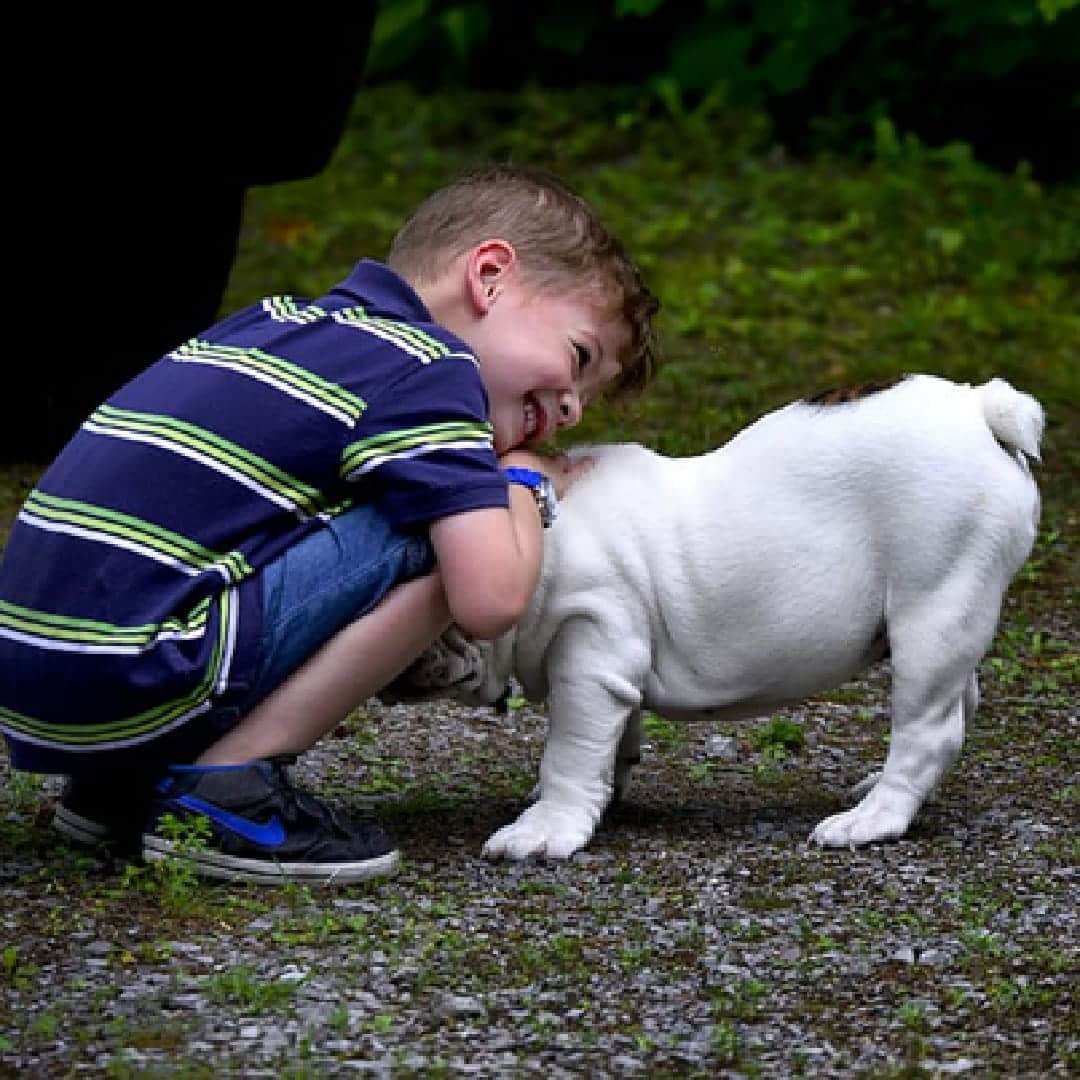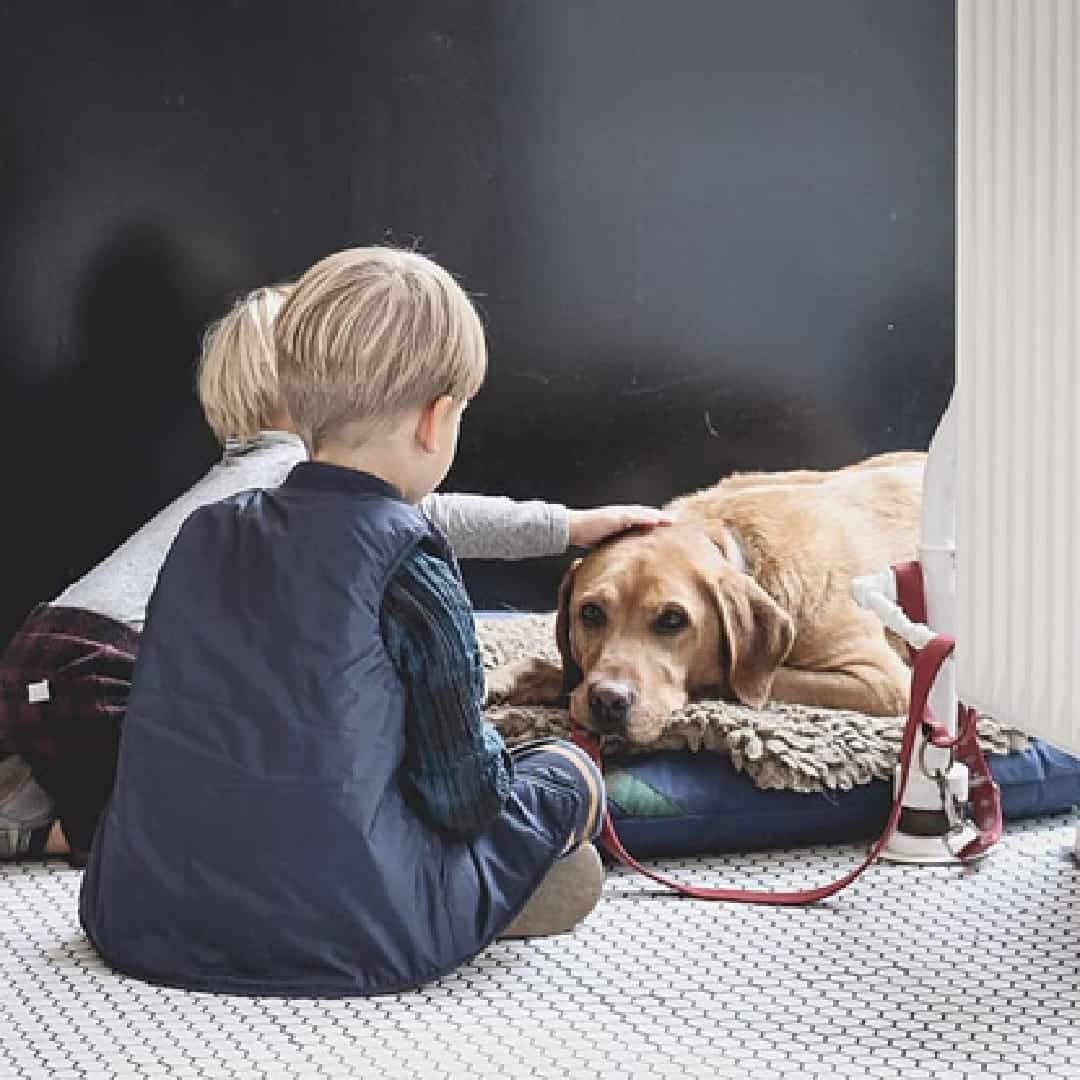Here are ten valuable tips to help children overcome fear of dogs and interact confidently with them. These suggestions aim to instill comfort and ease in engaging with our furry companions.
For many children, the fear of dogs is a significant source of anxiety and distress. Whether it’s due to a traumatic experience or just an innate fear, helping your child overcome their fear of dogs is vital for their emotional and physical well-being. Fortunately, there are many approaches and 10 Tips for Children Afraid of Dogs to alleviate their anxiety. From avoiding specific triggers to seeking professional help, learn the most common techniques for helping your child conquer their fear of dogs.
Why are Children Afraid of Dogs? Here are 10 Tips for Children Afraid of Dogs.
Raising kids with dogs gives them an excellent opportunity to learn how to handle animals and build strong bonds with them. Furthermore, they can be an entertaining addition to the family. Despite this, it may be surprising, but some kids are more afraid of dogs than other wild creatures such as tigers, spiders, or snakes. According to a study published by NCBI, kids can be scared of approaching dogs, which may come running towards them with their ears flapping or a rambunctious pup bounding up to them, barking and ready for play.
The root of Children’s Fear of Dogs
The root of a child’s fear of dogs may not be immediately evident. It could be due to being bitten or scratched by an overly zealous pup, or perhaps the child is mirroring the apprehension of an adult around canines.
Understanding the source is vital in alleviating a child’s trepidation. Kids can sometimes experience irrational fear of dogs, which is essential to respect. It would help to not force your kid into liking or engaging with them too quickly.
Help Children Gain Confidence
The best way for your child to gain confidence around unfamiliar animals is often gradual and needs special attention from parents. While playing with a friendly dog may have numerous long-term benefits for your child, parents must take it slowly. It might take time for them to become more comfortable and accustomed to dogs; follow our 10 Tips for Children Afraid of Dogs to help manage any fear they might initially have.
Are Dogs Afraid of Children?
When raised together, dogs and children can form a strong bond, but why do some seem afraid of children? The answer lies in the way dogs perceive the world around them. According to an article published on Research Gate, dogs may be scared of children because they are unfamiliar with their size and movements or have had a negative experience with a child. Understanding why your dog is afraid of children can help you create an environment where your pet feels safe and secure.
Children need Socialization
Dogs may be scared of children because they are unfamiliar with their size and movements or have had a negative experience with a child. Understanding why your dog is afraid of children can help you create an environment where your pet feels safe and secure.
Dogs may develop an apprehension of children for two primary reasons. It could be associated with previous experiences or a need for early exposure and socialization.
Help Children Gain Confidence by incorporating 10 Tips for Children Of Dogs.
The socialization of puppies is essential for a dog’s long-term well-being, especially when it comes to interacting with children. Dogs not exposed to children as puppies may become fearful and anxious when first encountering them as adults. As a result, these dogs may display aggression and discomfort around unfamiliar kids. Pet owners must adequately socialize their puppies early on to prevent any later issues from arising.
Negative Experiences
The consequences of a negative experience can linger in animals. Dogs, for example, may develop a fear of children if they have had an unpleasant experience, such as having their tails pulled by handfuls of fur. Even seemingly minor actions like stealing their toys or poking their eyes can cause them to become scared of children. However, some dogs still manage to stay tolerant despite any trying circumstances.
Teach Children How to Handle a Dog by following our 10 Tips for Children Afraid of Dogs
Teaching children how to handle dogs can help prevent potentially dangerous situations. Knowing the right skills can give your child the confidence to interact with canines without fear or anxiety. By teaching them how to be calm, assertive, and aware of their surroundings, children can learn how to avoid aggressive behaviour from dogs and even enjoy their company safely and securely.
How To Help My Child Overcome Fears of Dogs? Follow our 10 Tips for Children Afraid of Dogs
Does your child feel scared when they see a dog? If so, you are not alone. Many children experience fear or anxiety when they come into contact with dogs. Thankfully, these steps can help your child overcome fear and develop a healthy relationship with these furry friends.
10 Tips for Children Afraid of Dogs
Children fear dogs because of a traumatic experience or simply a lack of dog exposure. A paper published on NCBI revealed many ways to treat dog fear in children and teach them to enjoy the company of dogs.
1. A Positive Introduction
Introducing a dog into your home can be an exciting and joyous occasion for your family. But, as with any new addition, it’s important to remember that your child may initially feel scared or overwhelmed. It is natural and perfectly normal, and preparing for these reactions is essential to help ensure a positive introduction. It is best to keep the initial meeting short and calm. With patience and understanding, your child will soon come to love their new four-legged family member!
2. Go for Supervised Walks
Allowing your child to walk supervised with the family dog is an excellent way to build trust and help them become more comfortable around animals. Taking frequent breaks lets your child pause and reflect on their experiences, allowing them to learn at their own pace. With this approach, your child will gain confidence interacting with the family pet and become more comfortable in their surroundings.
3. Develop a Connection between Dog & Child
Teaching children how to interact with animals is an integral part of parenting. One way to do this is to get them comfortable around the animal by introducing themselves before petting it. Teaching your child to say hello and ask the dog’s name can help them build a relationship with the animal. It will make it easier for your child to develop a connection and trust with the animal, making their time spent together much more enjoyable.
4. Teaching your Child with Positive Re-Enforcement
Positive reinforcement is essential to teaching your child how to interact with dogs safely. When they approach and interact with a dog, showing them how to do it calmly and encouragingly is critical. It can help build their confidence when interacting with animals and ensure their safety. With the proper guidance, your child can learn how to approach and interact with dogs positively, which will benefit them and the animal.
5. Encourage your children to use positive language.
Teaching children positive language is essential for their social, emotional, and intellectual development. According to NCBI, by encouraging children to use phrases such as “I’m excited I get to meet our new neighbours” when they encounter a new dog in their life, we can help them learn how to cope with their fear and look forward to meeting new people or animals in the future. Children can learn that meeting strange things can be a fun experience with the right words and an open mind.
6. Take your child with the family To the Vet.
Taking your child to the vet can be an excellent opportunity to teach them the importance of responsible pet ownership. It is also an effective way to build confidence in caring for their beloved animal companion. Regular visits to the vet, approximately every six months, and ensuring that the dog has its rabies vaccination kept up-to-date are essential steps for maintaining your pet’s health and well-being; doing so will teach your child how to stay safe when caring for animals.
7. Teaching your children to call animal control in an emergency
An emergency can be a lifesaver. Animal control officers are trained in handling various animal-related emergencies, from rescuing pets to removing wild animals from homes. Knowing how and when to contact animal control can keep your family safe and help alleviate stress in potentially dangerous situations.
8. Teaching your child to Give Basic Dog Commands
Interacting safely and confidently with dogs is an invaluable life skill. By introducing your children to basic commands like “leave it,” “stay,” and “sit” when meeting a dog, you can provide them with a sense of control in unfamiliar situations. Not only do these commands help to keep the dog safe, but they also help your children feel comfortable enough to engage in meaningful interactions with different dogs.
9. Teaching Children To Be Gentle
Follow our 10 Tips for Children Afraid of Dogs. Teaching children the importance of gentleness and respect for animals is an important life lesson. We can help instill these values in our children by teaching them that dogs do not like to be teased and need their space. As parents, we can guide our kids to interact with animals positively so that they understand the importance of respecting their boundaries. It will help create a more harmonious relationship between humans and animals without fear for years to come.
10. How to Safely Sit with a dog without fear
Teaching your children how to handle and pick up animals safely is integral to responsible pet ownership. It is also essential for keeping both the pets and your children safe. To ensure that your children know how to handle animals properly, you should teach them “not to” touch the animal but also “how” to do it correctly and sit and play gently.
Conclusion: 10 Tips for Children Afraid of Dogs
Teaching children how to stay safe around dogs is integral to parenting. With the help of a game, parents can make learning about dog safety fun for their kids. This game encourages children to turn away from the dog and stand still with their arms by their sides – a behaviour that dogs naturally ignore. Playing this game teaches kids to stay calm and show respect when encountering a dog, which helps keep them safe.
It is possible to help children overcome their fears and learn to interact safely with dogs. Teaching your child the proper way to approach and handle dogs can create a lifetime of positive experiences that will help your child develop confidence around animals. Your child will learn to interact with dogs with patience and practice while staying safe and having fun properly!
Encourage Children and Guide them with Tips for Children Afraid of Dogs.
Teach your child to always ask a dog parent if petting a dog they haven’t met before is okay.
Children need to understand that not all dogs are comfortable with being petted by strangers, and it’s essential always to ask the owner if it’s okay first. It will help ensure that everyone stays safe and happy!










